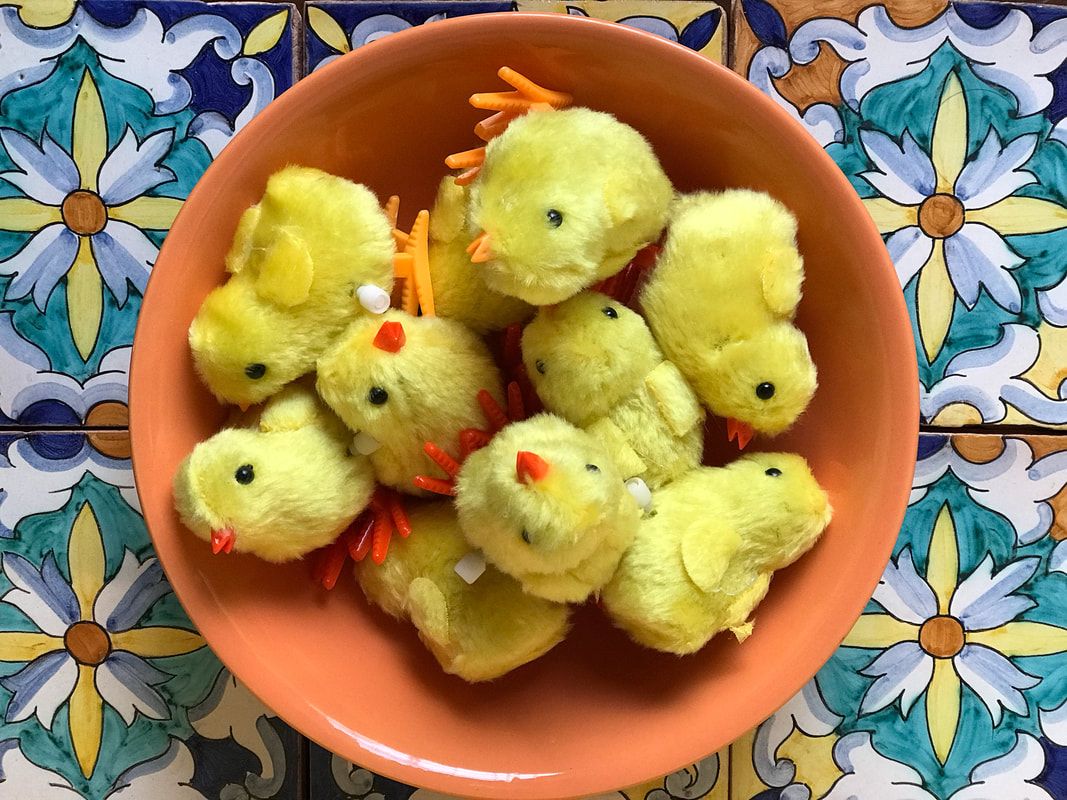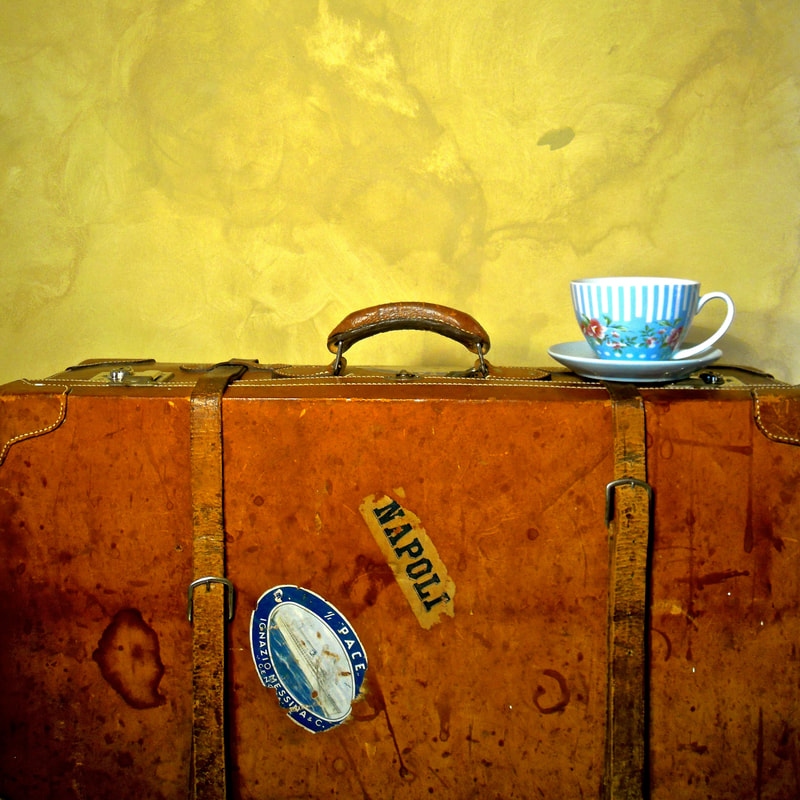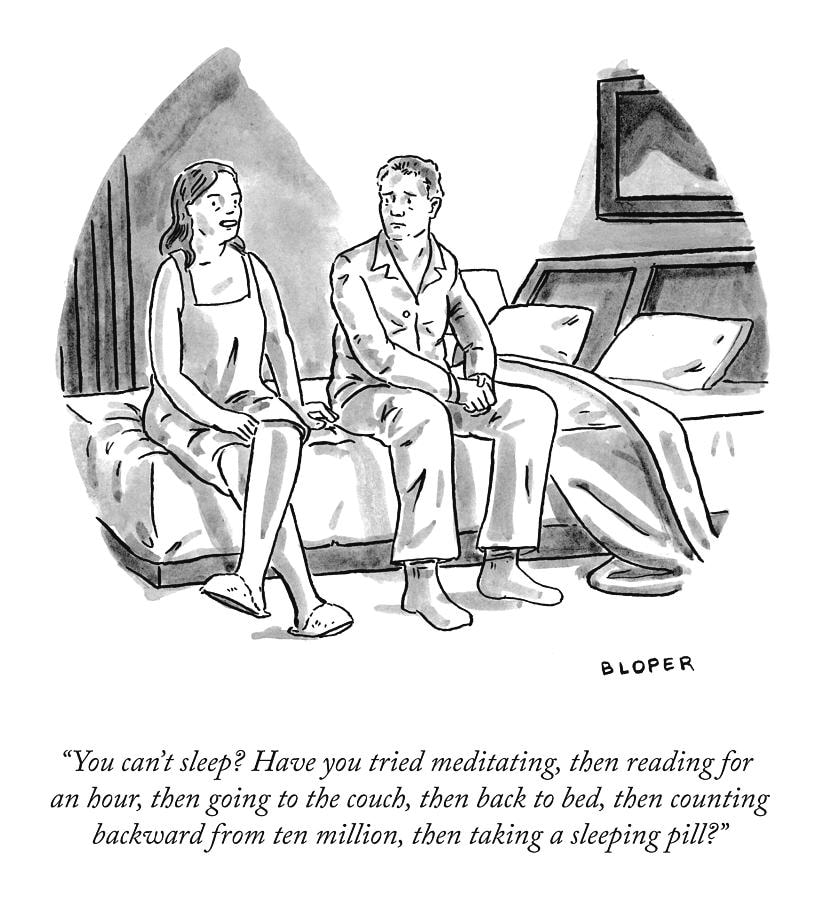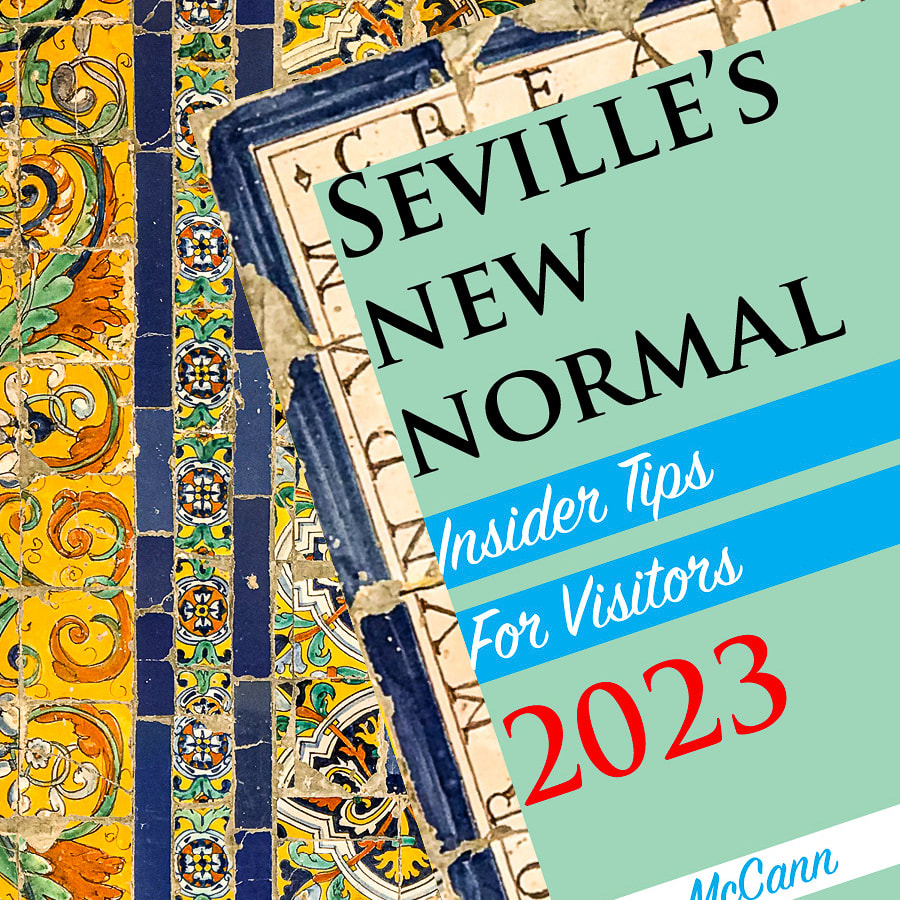|
Many of my Spanish friends are firmly convinced of two things: 1) Thanksgiving is the most significant holiday in the US calendar, and 2) all American women spend their leisure hours sewing quilts. In vain have I protested that I’ve never quilted in my life. Equally impossible is convincing them that the prevalence of Thanksgiving scenes in movies is not due to the occasion's supreme importance but because it’s the one holiday we all celebrate in roughly the same way. On the fourth Thursday in November, millions of us set aside religious, ethnic, even political differences to fulfill the time-honored tradition of bringing out the best in family disfunction since 1621. Will it will really feel like Thanksgiving without the chaos of a large, multi-generational donnybrook? Might the day fall flat without arguments over seating arrangements, whether marshmallows truly belong on sweet potatoes, and why your temperamental uncle stormed out shouting “You cut the turkey without me? You might as well have stabbed me in the heart,” as in the iconic scene from the movie Avalon?  Apple cider mimosas. Photo by DIY.Candy Apple cider mimosas. Photo by DIY.Candy Naturally, those of us who are sensibly avoiding super-spreader holiday feasts are feeling a little adrift right now. I’m deeply saddened that Rich and I aren’t in Seville to hold our traditional Thanksgiving potluck followed by an afternoon of old-fashioned parlor games. Clearly I’ve got to find fresh ways to make the day special for the two of us, perhaps even create a few new traditions. Here’s are my best ideas so far. Sip apple cider mimosas. I found this simple recipe online and believe it’s just what I need to start the day off right. You rim the glass with a 50-50 mix of brown sugar and cinnamon (moisten the rim first to make it stick), pour in equal amounts of cider and champagne, and sip away. If you’re not sure this is for you, try it out well in advance (today, if possible) and repeat as often as necessary to make a fully informed decision. Avoid supermarkets; do last-minute shopping online. The CDC recommends staying out of crowded grocery stores in the run-up to turkey day, and that sounds like good wisdom to me. So I’m stocking up on Thanksgiving provisions this week, then filling in any last minute gaps with an online order from a nearby market with reliable delivery service. Ask people what they're thankful for. In the early years of our Thanksgiving feasts in Seville, people were bashful about standing up and toasting things for which they were grateful. Now our guests, including small kids, tell me they start thinking about their toasts days, even weeks in advance. So let me ask you: If you had to stand up right now and name something you’re thankful for, what would it be? Even 2020 had some good moments (yes it did!). My list includes a friend getting off the ventilator, the election signaling change, and (we hope) viable vaccines at last. I’m spending a lot of time on Zoom, often with those who are usually at my Thanksgiving feast, and I’ll be asking everyone to tell me what they are grateful for these days. Write those thankful thoughts on a tablecloth. I loved this idea when I ran across it online yesterday, and I immediately suggested to Rich that we try it this year. “We can write down what people tell us they’re grateful for,” I said. "The article suggests buying a canvas drop cloth.” But Rich was sure we had something in the attic that would serve, and after a brief rummage around, he emerged with an ancient quilt the movers had used to pad our furniture on the truck back in 2007. The quilt is cheap, battered, threadbare, and sporting unidentifiable stains and patches of masking tape. “Perfect for 2020,” I said. Play games online. My family (and I say this lovingly) is obsessed with games of wit and chance. So I’ve been checking out versions of charades and Pictionary that use an online word generator to get the Zoom party going. Testing knowledge is another family sport; we’ve been known to idle away hours on the beach with stacks of cards from Trivial Pursuit. There are countless online options for group and solo fun such as Thanksgiving Trivia and virtual pub quizzes on topics such as Game of Thrones and Bond movies. I’m about the least musical person on the planet, but as a film buff, I was mesmerized by the multiple-choice Movie Music Quiz, and by this video, which gives you ten seconds to name that tune. Hold a scavenger hunt IRL (in real life) with housemates. When I was a kid my mother loved to send us off on scavenger hunts; she’d give us a list of objects to find and we’d be out of her hair for hours. With just two of us playing this Thanksgiving, I thought Rich and I could each come up with three items for the list, so we’d each be seeking a total of six things. These could be simple (something you eat spaghetti with) to profound (an object that represents a mystery in your life) to esoteric (yesterday, today, tomorrow). This isn’t a competition, it’s an opportunity to use ordinary objects to spark meaningful conversation. Possibly over another round of apple cider mimosas. Shop for holiday cards. In the late afternoon, between turkey, games, and Zoom calls, I expect I’ll have a little downtime, which I can use to prep for the next round of celebrations. Living overseas for so long, I’ve fallen into the convenient habit of sending out digital holiday greetings. But this year, when so much of our lives are spent staring at screens, I feel the need to reach out in a more tangible way. So I’m sending out old-fashioned greeting cards — yes, paper, ink, stamps, the whole nine yards — with wording that properly reflects the spirit of 2020. As you gear up for Thanksgiving, even if that’s just buying a frozen turkey pot pie and picking out a movie, I hope you’ll pause for a moment and look back over 2020. No, wait, don’t relive the whole ghastly year (shudder!), just see if you can find a few highlights that spark gratitude. And then tell me about them in the comments below, so I can add them to my Thanksgiving quilt. “My Thanksgiving quilt.” Yikes! Typing those words, I realize that maybe my Spanish friends weren’t so far off the mark after all. Thanksgiving is, if not the biggest, perhaps the best of our holidays, the one that’s abundant without being as overwhelming as the high-octane December merrymaking. And now I’ve managed to add a quilt into the mix. I don’t think this battered old furniture pad is precisely what my amigos had in mind, but now it strikes me as a fitting symbol of America’s imperfect, makeshift, ever-evolving holiday. And a good reminder that at this turning point of the year, it’s time to leave the past behind, live as fully as possible (yes, even in our present tattered state), and embrace the future with a lighter, warmer heart. So what are you thankful for right now? What Thanksgiving traditions are you fulfilling this year? Please let me know in the comments section below. PS: Don't look for a post next week; I'm taking time off to enjoy the holiday. I'll be back with a new article in December. YOU MIGHT ALSO ENJOY This post is part of my ongoing series of articles on surviving the pandemic while holding on to some shreds of our sanity and sense of humor, and remembering to enjoy life's small comforts. Sign up HERE to get free stories in your inbox each week.
23 Comments
I come from a family of light sleepers, and my ability to snooze for eight solid hours — a slippery goal at best — has not improved during the jittery pandemic months. Has anyone’s? Sleep experts talk of “a second pandemic of insomnia” and “coronasomnia.” But I’m resting a bit easier now that I’ve learned this truth: there is absolutely nothing unhealthy about waking up in the middle of the night. In fact, for nearly all of human history, our nighttime hours were divided into first sleep and second sleep, with an intermission of one to three hours for various activities (yes, including lots of sex). “During this waking period people were quite active,” according to the BBC’s The myth of the eight-hour sleep. “They often got up, went to the toilet or smoked tobacco and some even visited neighbours. Most people stayed in bed, read, wrote and often prayed. Countless prayer manuals from the late 15th Century offered special prayers for the hours in between sleeps. And these hours weren't entirely solitary — people often chatted to bed-fellows or had sex. A doctor's manual from 16th Century France even advised couples that the best time to conceive was not at the end of a long day's labour but ‘after the first sleep,’ when ‘they have more enjoyment’ and ‘do it better.’” This natural two-part sleep pattern seems to have worked well for perhaps ten thousand years. Then in the late 16th century, street lighting was introduced, and for the first time ever, it was safe and socially acceptable to venture out after dark. Until then, the night was considered the domain of thieves, prostitutes, and predators. “The assumption that nothing good could go on at night,” reported the History Channel, “was so widespread that until the arrival of artificial lighting, citizens often freely emptied their ‘piss-pots’ out of windows after dark.” A practice that would be frowned on today. When the industrial revolution upped the ante on productivity in the 18th century, those unstructured nocturnal hours suddenly seemed slothful and old-fashioned. Unstinting efforts to achieve solid eight-hour blocks of shut-eye soon made sleep deprivation the norm. Now our slumber patterns are changing again, thanks to the pandemic. With millions unemployed, millions more going part time, and 42% of employed Americans working from home — often while homeschooling kids — everyone’s timetable is upended. One of the casualties of this chaos is the quality of our sleep. Nobody knows how many of us lie awake worrying about Covid-19 — my guess would be everyone. And that’s entirely appropriate. We are in serious, planet-wide trouble; of course we’re upset and anxious. “Living with those uncomfortable feelings,” Buddhist mystic Pema Chödrön said recently, “is a natural part of the human experience. It doesn’t mean that we are doing something wrong.” We don’t have to add to our distress by criticizing ourselves for the “failure” or “weakness” of being awake in the middle of the night. Having quiet time to process our emotions may be more valuable than catching forty winks. Letting go of stressing about unscheduled periods of wakefulness can be the first step to improving the way we relate to sleep. What else might help? Find structure. I relax more and sleep better when my time is anchored in routine. “Isolation, monotony, and chronic stress are serving to destroy our sense of time,” reports the SF Chronicle. “Without the usual work mixers, far-flung vacations or casual dinners that typically mark and divide the calendar, the brain has a harder time processing and cataloging memories, psychologists say, and the stress of the year itself can shift how our brains experience time.” It helps me to know that Mondays and Thursdays are my domestic goddess days, when I shop, bake, do laundry, and reorganize particularly catastrophic closets and drawers. Tuesdays and Wednesdays are devoted to this blog, while Fridays and Saturdays are set aside for painting. At the end of every week, Rich and I enjoy a leisurely European-style Sunday lunch, in the garden if possible, usually with a glass (or two) of wine, followed by a siesta.  For this Sunday lunch in the garden I served an old favorite, buttermilk salmon chowder, with a fresh-baked loaf of Irish soda bread full of raisins and nuts. http://southbeachdietrecipe.blogspot.com/2009/11/buttermilk-salmon-chowder-phase-2.html https://www.jessicagavin.com/irish-soda-bread-with-raisins-and-walnuts/ Take siestas. I love the way siestas shape the rhythm of my day; it’s like having 14 mornings a week. And they’re good for us. NASA found a 20-minute snooze improved astronauts’ efficiency 34%. Siestas also offer a 37% reduction in the chance of a fatal heart attack (for instance, from reading news headlines) and can reverse information overload and burnout. Think you’re too busy to squeeze in a snooze? Churchill napped each afternoon (changing into pajamas every time) while going toe-to-toe with Hitler in WWII. He and I agree: siestas help us navigate challenging days and sleep better at night. Eat well. And by “well” I mean simple, yummy comfort food that’s reasonably healthy. “Data shows that eating less fiber, more saturated fat, and more sugar throughout the day is linked with lighter, less restorative sleep,” notes Ana Krieger, MD, MPH, Medical Director of the Center for Sleep Medicine. Obviously nobody expects us to get through this challenging time without chocolate, but a steady diet of junk food makes the road to dreamland a bit bumpier. Exercise. To work off my stress, I take long rambles around the neighborhood and use my trusty little stair-stepper when the outside air gets chilly or becomes unbreathable from wildfire smoke. Free online yoga videos help keep mind and body flexible, and on really agitated days, it’s nice to know I can relax before bed with wind-down routines from Adriene, Tim, or other YouTube yogis. Make bedtime conducive to sleep. Lower the lights, leave your phone and laptop in another room, and don’t discuss anything scary or contentious with your partner. This is not the moment to debate home improvements or mention another friend is hospitalized with Covid-19. Do things you find calming, such as breathing exercises, a warm bath, or light reading. Avoid thrillers like Stephen King’s pandemic horror story The Stand if you hope to close your eyes any time in the near future. If you can’t sleep, get up. Otherwise you begin to associate your bed with restlessness and anxiety instead of repose. Sometimes I go into another room and listen to one of YouTube’s free audiobooks. I choose one with a tranquil voice and familiar plot, so if I doze off I don’t mind a bit. “Not being able to sleep is terrible,” says cartoonist Lynn Johnston. “You have the misery of having partied all night…without the satisfaction.” The fact is, nobody ever manages a perfect snoozing schedule. As playwright Wilson Mizner put it, “The amount of sleep required by the average person is five minutes more.” Our best chance of satisfying sleep is to stop worrying so much about it — and to be kind to ourselves if we don’t precisely hit some arbitrary slumber benchmark from the 18th century. Our sleep patterns are as imperfect as we are, as challenging as this crazy world we live in, and on a good night, as restorative as a week-long vacation with someone we love. Sweet dreams! How are you sleeping these days? Any suggestions for fighting insomnia? Do you have comfort food recipes to share? Let me know in the comments below. This post is part of my ongoing series of articles on surviving the pandemic, holding on to some shreds of our sanity and sense of humor, and remembering to enjoy life's small comforts. Sign up HERE to get free stories in your inbox each week. YOU MIGHT ALSO ENJOY |
This blog is a promotion-free zone.
As my regular readers know, I never get free or discounted goods or services for mentioning anything on this blog (or anywhere else). I only write about things I find interesting and/or useful. I'm an American travel writer living in California and Seville, Spain. I travel the world seeking eccentric people, quirky places, and outrageously delicious food so I can have the fun of writing about them here.
My current project is OUT TO LUNCH IN SAN FRANCISCO. Don't miss out! SIGN UP HERE to be notified when I publish new posts. Planning a trip?
Use the search box below to find out about other places I've written about. Winner of the 2023 Firebird Book Award for Travel
#1 Amazon Bestseller in Tourist Destinations, Travel Tips, Gastronomy Essays, and Senior Travel
BLOG ARCHIVES
July 2024
CATEGORIES
All
|

























